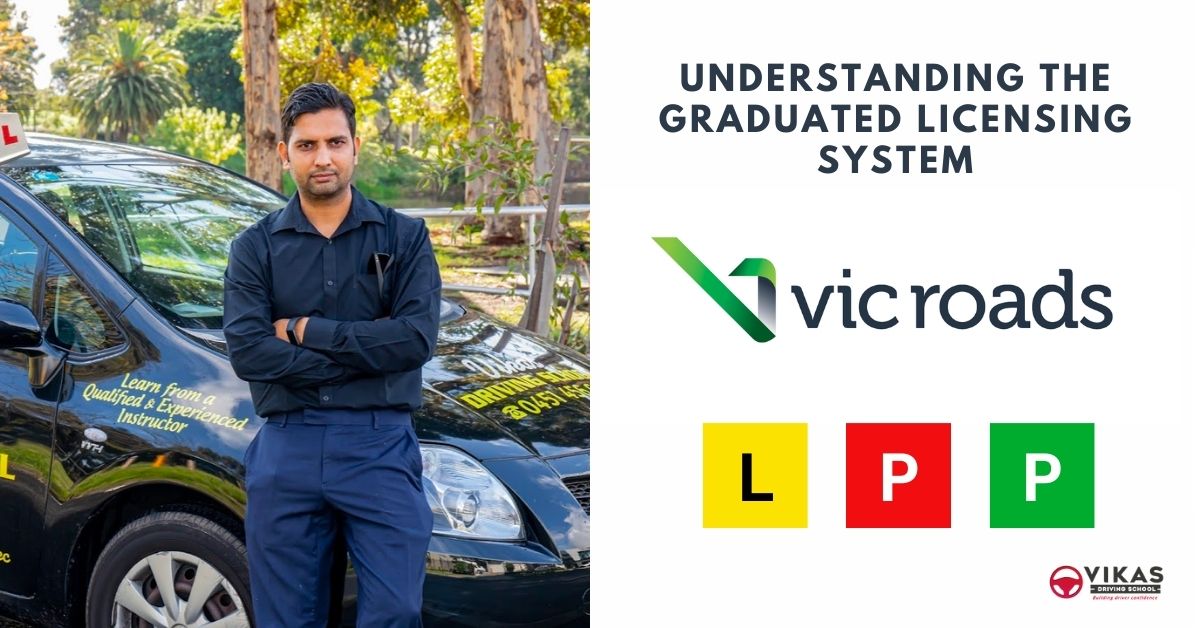Are you ready to embark on your journey towards becoming a licensed driver in Victoria, Australia? Understanding the Graduated Licensing System (GLS) is a crucial step in this process. Whether you’re a new learner or a parent guiding your teen through the process, this guide will provide you with all the information you need to navigate Victoria’s GLS effectively.
What is the Graduated Licensing System (GLS)?
The Graduated Licensing System (GLS) is a step-by-step approach to obtaining a driver’s license in Victoria, designed to ensure that new drivers gain experience and skills gradually. It aims to reduce the risk of accidents among novice drivers and create safer roads.
The Three Stages of GLS:
The GLS in Victoria consists of three main stages:
- Learner’s Permit (L-Plates): This is the first step, and it’s designed for those who are just starting to learn to drive. To obtain a Learner’s Permit, you must be at least 16 years old, and pass the Learner Permit Knowledge Test. Then you can start practicing with a supervising, fully licensed driver. You need to book vic road test in order the get your learner’s permit.
- Probationary License (P1 and P2): After completing a minimum of 120 hours of supervised driving (including at least 20 hours of night driving) and holding your Learner’s Permit for at least 12 months, you can apply for a Probationary (P1) License. P1 drivers have certain restrictions, such as a limit on the number of passengers and a ban on using mobile phones while driving. After holding a P1 License for at least 12 months, you can progress to a P2 License with fewer restrictions.
- Full License: After successfully completing the P2 phase, you’ll obtain your Full License. This phase typically takes three years, provided you follow the road rules and maintain a clean driving record.
Graduated Licensing System Benefits:
The GLS offers several advantages:
- Safer Roads: Gradually introducing new drivers to the complexities of the road reduces the risk of accidents and promotes safer driving habits.
- Skill Development: Drivers have the opportunity to build their driving skills over time, increasing their confidence and competence.
- Experience: Each stage introduces new challenges, helping drivers adapt to various road and traffic conditions.
How to Progress Through the GLS:
To move from one stage to the next, you must:
- Meet the minimum time requirements for each phase.
- Complete the required supervised driving hours.
- Pass a hazard perception test.
- Pass a practical driving test.
Preparing for Your Tests:
- Use resources such as the “Road to Solo Driving” handbook and online practice tests to prepare for the hazard perception and practical driving tests.
- Consider enrolling in professional driving lessons to build your skills and confidence.
Conclusion:
Navigating the Graduated Licensing System in Victoria is a crucial step toward becoming a safe and responsible driver. By understanding the three stages and the associated requirements, you’ll be better prepared for each phase of your journey. Remember that patience, practice, and adherence to road rules are key to successfully progressing through the GLS and ultimately obtaining your Full License.
If you’re looking for a reputable driving school in Melbourne to help you through the GLS, Vikas Driving School is here to guide you at every stage. Our experienced instructors are dedicated to providing top-notch training and support on your journey to becoming a licensed driver.
For more information or to schedule your first lesson, please visit our Vikas Driving School.

